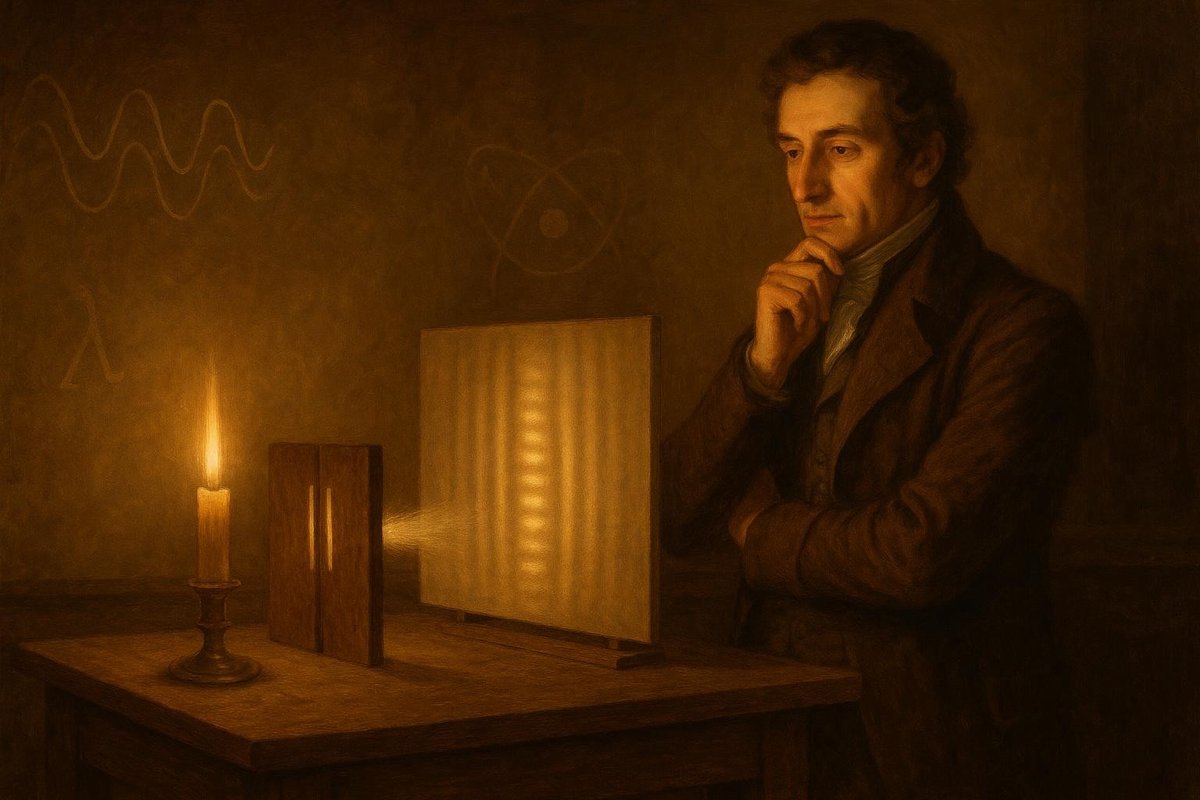
Have you ever wondered why light behaves both like a wave and a particle? This perplexing question puzzled scientists for centuries until Thomas Young, an English polymath, stepped into the fray with an ingenious experiment that changed our understanding of light forever. This is the story of the double-slit experiment, a brilliant scientific detective story that reshaped physics.
Hypothesis & Context
In the early 1800s, light’s true nature was a hot topic among scientists. Was it a wave, as Christian Huygens had suggested, or a particle, as Isaac Newton had proposed? The scientific community was divided. Young, intrigued by this debate, decided to test the prevailing theories.
- Young hypothesized that if light were a wave, it would exhibit interference patterns when passing through two closely spaced slits.
- This hypothesis was inspired by water waves, which create similar patterns when they overlap.
Interestingly, Young was not merely challenging Newton’s authority; he was driven by curiosity and the desire to illuminate the truth about light. In a lecture to the Royal Society in 1803, he posed a daring challenge: “Can light waves interfere like water waves?” His question was bold and sparked intrigue.
Setup & Method
Young’s experiment was elegantly simple yet profound. He set up a light source, a barrier with two slits, and a screen to capture the light patterns.
- He allowed light to pass through the two slits, anticipating that if light were a wave, it would produce an interference pattern on the screen.
- Remarkably, Young conducted this experiment with only sunlight and basic materials available in the early 19th century.
The setup was ingenious. By using two slits, Young ensured that any interference pattern observed could only be explained by wave behavior. His method was a perfect marriage of simplicity and sophistication, demonstrating that groundbreaking science doesn’t always require complex technology.
Results & Reactions
As the light passed through the slits, an interference pattern emerged on the screen—a series of light and dark bands, much like the ripples you would see if you dropped two stones into a pond.
- This outcome was irrefutable evidence that light behaved as a wave.
- The results challenged the Newtonian view, igniting debates and skepticism.
Many people believed in the particle theory of light, and Young’s findings were initially met with resistance. However, his results were clear: “The experiment speaks for itself,” he famously remarked. His experiment laid the groundwork for future discoveries about wave-particle duality and quantum mechanics.
Implications
Young’s double-slit experiment had profound implications. It not only challenged existing theories but also paved the way for the development of quantum mechanics in the 20th century.
- It introduced the concept of wave-particle duality, a cornerstone of modern physics.
- It inspired scientists like Albert Einstein and Niels Bohr, who further explored quantum phenomena.
The experiment transformed our understanding of light and matter. It showed that the universe operates on principles that defy intuitive understanding, fundamentally altering the course of scientific thought. As Young once said, “Nature can be subtle beyond our wildest imaginings.” His work reminds us of the continuous quest for knowledge and the courage to question established norms.
In conclusion, Thomas Young’s double-slit experiment was a pivotal moment in the history of science. It demonstrated the dual nature of light and set the stage for future breakthroughs in physics.
Fuel Someone Else’s Curiosity
If you’ve been enlightened by this journey into the world of light, why not share it with someone else? Every time we discuss such fascinating topics, we contribute to a broader understanding and appreciation of science. Your curiosity could ignite someone else’s passion for discovery.

Leave a Reply